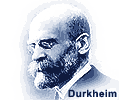Moscow and St. Petersburg as Centers of Attraction of Social Nets
Sergeev V.M.,
Dr. Sci. (Hist.), Professor, Principal Researcher, Institute for International Studies, MGIMO University, Moscow, Russia, victor04076831@mail.ru
elibrary_id: 1447 |
Kuzmin A.S.,
Dr. Sci. (Philos.), Deputy Director, International Institute of Humanitarian Political Studies. Moscow, Russia, kuzmin_alexei@newmail.ru
Alekseyenkova Ye.S.,
Cand. Sci. (Polit.Sci.), Leading Researcher and Head of the Center for Italian Studies at the Institute of Europe RAS, Moscow, Russia, alekseenkovaes@gmail.com
elibrary_id: 249800 | ORCID: 0000-0003-3527-6966 | RESEARCHER_ID: A-8825-2016
Kazantzev A.A.,
Principal Researcher, Institute for International Studies, MGIMO University; Professor, HSE University; Principal Researcher, Science and Education Laboratory of political geography and contemporary geopolitics, HSE University, andrka@mail.ru
elibrary_id: 123521 | ORCID: 0000-0002-4845-1391 | RESEARCHER_ID: H-2728-2016
DOI: 10.17976/jpps/2007.02.03
Sergeev V.M., Kuzmin A.S., Alekseyenkova Ye.S., Kazantzev A.A. Moscow and St. Petersburg as Centers of Attraction of Social Nets . – Polis. Political Studies. 2007. No. 2. https://doi.org/10.17976/jpps/2007.02.03
The article takes aim at studying Moscow and Petersburg as centres of attraction of social nets from the expanse of European Russia and, besides, as global centres of innovative economic growth. On analyzing the development of the two Russian “capitals” as transport junctions, communicational, financial, scientific-innovative and cultural centres, the authors come to the conclusion that by their infra-structural parameters and statistical characteristics Moscow finds itself at the level of many “global gateways”, whereas St. Petersburg so far presents not more than a regional “quasi-gateway”. In the authors’ estimation, Moscow’s evolution in the direction of a “normal gateway” is restrained by the low level of trust to be found in society, and by the strong politico-administrative control over the country’s economy. As a result, the city presents a focus of concentration of nets first of all for the expanse politically controlled by it (and, residually, for the expanses it used to control earlier – in particular, for the CIS countries), and not for the world as a whole.
See also:
Sergeev V.M., Kuzmin A.S., Nechayev V.D., Alekseyenkova Ye.S.,
The Trust and Spatial Interaction of Social Nets. – Polis. Political Studies. 2007. No2
Sergeev V.M., Kazantzev A.A.,
Net Dynamics of Globalization and Typology of “Global Gateways”. – Polis. Political Studies. 2007. No2
Sergeev V.M., Kuzmin A.S., Nechayev V.D., Alekseyenkova Ye.S., Kazantzev A.A., Dozhdikov A.V., Yevstifeyev R.V., Usmanov S.M., Chernyshov S.V., Fyodorova I.M., Khomutova O.Yu., Vinogradova S.A.,
The “Choir” of the Moscow “Gateway” and Scenarios of Its Development. – Polis. Political Studies. 2007. No2
Smirnova A.G.,
A State’s Depiction as Instrument of Threat Cognition in International Relations. – Polis. Political Studies. 2008. No5
DOSSIER: SOCIAL PROTECTION. – Polis. Political Studies. 1991. No6





.jpg)






 print
print
.jpg)
.jpg)